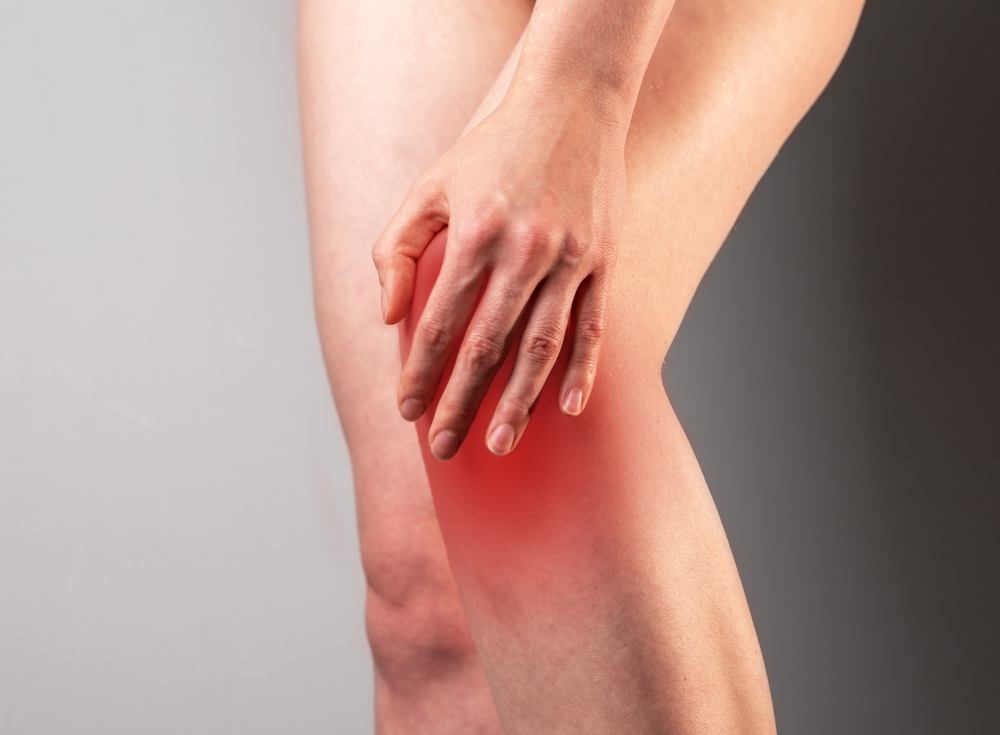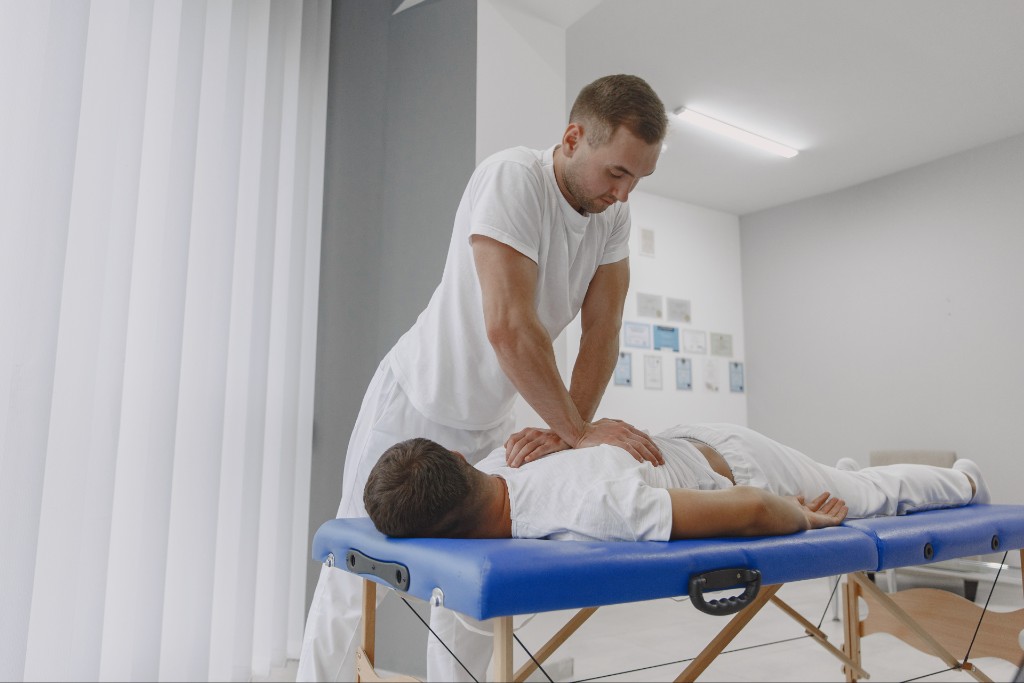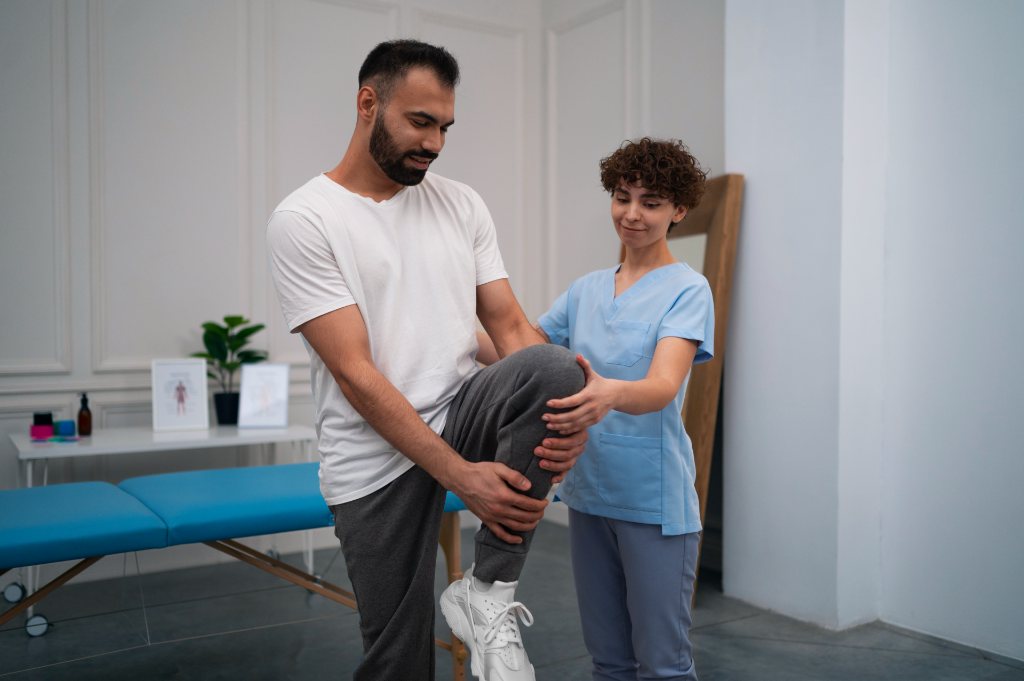Knee injuries are relatively common and can happen to people of all ages and walks of life. You might be familiar with knee injuries that you hear about with professional athletes, like a torn ACL or a torn MCL. People who participate in sports or other physical activities are at greater risk for knee injuries that can affect the muscles, ligaments, tendons, and other soft tissues that help your knee function. In fact, knee injuries are some of the most common types of injuries that affect athletes, both amateur and professional. A knee injury can make it difficult or painful to do simple things like bending and straightening your knee or even bearing weight on your leg. While some knee injuries are more well-known, up to 50% of knee injuries can include a meniscal tear. Here’s everything you need to know about a meniscal tear and what to expect with this type of knee injury.
What Is a Meniscus?
The meniscus is a crescent-shaped piece of fibrocartilage that is found in many joints in the body, including the knee, wrist, and elbow. A meniscus is made up of connective tissue that is tough and elastic. Ligaments in the joint hold the meniscus in place and attach it to the bones of the joint. The knee is a hinge joint and has two menisci that help distribute weight across the knee and cushion the joint during movement. The menisci also help to stabilize the knee and prevent the thighbone and shinbone from rubbing against one another. Menisci also help maintain proper alignment of the knee joint, which helps prevent excess stress on the joint. The menisci of the knee are an important part of the joint that allows for smooth, pain-free movement.
Lateral Meniscus
The lateral meniscus is located on the outer side of the knee between the thighbone, or femur, and the shinbone, or tibia. The lateral meniscus helps to distribute weight and pressure across the knee joint and also provides cushion during movements like bending, straightening, and twisting.
Medial Meniscus
The medial meniscus is located on the inner side of the knee and supports healthy stabilization and alignment of the knee joint. The thighbone and shinbone stay in proper position relative to each other thanks to the medial meniscus.
What Is a Torn Meniscus?
A torn meniscus refers to damage or injury that affects one or both menisci in the knee joint. Damage to this tough and elastic connective tissue can cause a small tear in the meniscus or even separate the meniscus from the ligament or bone. It is possible to suffer a torn meniscus that affects the medial or lateral meniscus. In some cases, a knee injury could result in a tear that impacts both menisci in the knee. Depending on how severe the damage to the meniscus is, you could experience pain and instability in the affected joint that may require surgery to repair.
Symptoms of a Meniscal Tear
The symptoms of a meniscal tear can vary depending on the severity of your injury and your specific health factors, like whether you are an athlete and the relative health and strength of your knee joint and surrounding tissues. Here are some of the most common symptoms of a meniscal tear:
Pain
Pain is the most noticeable symptom of a meniscal tear. If you suffer a sudden injury or trauma to the knee, you could experience a sudden and sharp pain. Depending on the severity of the meniscal tear, you could also experience a dull pain that feels like it’s throbbing or aching. Pain from a meniscal tear can also get worse with certain knee movements like bending or straightening or when you try to bear weight on the affected knee. You can also experience pain in the non-injured knee if you start to overcompensate by putting more weight and pressure on that knee to avoid the discomfort in the injured knee.
Swelling
Swelling can occur in the hours or days after a sudden injury or trauma to the knee. You may notice more swelling in the area around the knee when your leg is straightened. Swelling can also increase your pain and discomfort, and some people describe this sensation as their knee feeling “heavy” when they try to bear weight.
Stiffness
If you suffer a meniscal tear, you may experience stiffness in the affected knee joint. Stiffness in the knee can make it difficult to move your knee, especially when you try to straighten your leg fully. Stiffness can also occur if you have been sitting for a long period of time and then try to stand up and put weight on the knee. Similarly, you could also experience discomfort or stiffness in the knee if you have been standing on your knee for a while and then try to bend the knee when you sit down.
Locking or Catching
A torn meniscus may catch or lock when you try to bend or straighten your knee. This can make your knee feel unstable or even give way, putting you at risk for further injury or aggravating the area.
Clicking or Popping
Some people who suffer from a torn meniscus notice a clicking or popping sound when they move their knee. If you suffer a torn meniscus suddenly, like with a sports injury or a fall, you may also hear a loud click or pop when the initial tissue tears.
Decreased Range of Motion
You may not be able to bend and straighten your knee because of the pain and stiffness associated with this type of injury. A torn meniscus can cause a decreased range of motion, so you may notice that your leg cannot straighten all the way or that it does not bend as far as you are used to.
Common Causes of a Meniscal Tear
There are several common causes of a meniscal tear.
Traumatic Injury
A traumatic injury refers to a sudden twist or turn of the knee, which occurs most often during sports or other physical activities. A sudden slip and fall injury could also result in a torn meniscus.
Overuse
If you put repetitive stress or wear and tear on your knees, you could end up with an overuse injury like a meniscal tear. Overuse injuries occur from repetitive movements and can develop slowly over time.
Age-Related Degeneration
Age-related degeneration of tissues in joints like the knees can put you at greater risk for an injury. The menisci can become more prone to tearing because of natural degeneration in the joint that causes these tissues to break down and lose their strength and elasticity.
Knee Joint Misalignment
If you have a misalignment in your knee joint, it can put too much stress on the meniscus or other tissues in the area, which can increase your risk for a meniscus tear. When your knee is out of alignment, it cannot function properly and can even put you at risk for ligament tears or bone fractures.
How Common Is a Meniscus Tear with Other Knee Injuries?
A torn meniscus is a common injury that occurs alongside other knee injuries like torn ligaments or broken bones. These are four types of knee injuries that can also occur alongside a torn meniscus.
ACL Tear
An ACL tear is another common knee injury, especially for people who participate in sports or other high-impact activities. ACL refers to the anterior cruciate ligament that helps stabilize the knee joint.
MCL Tear
An MCL tear affects the medial collateral ligament that works to stabilize the inner side of the knee. An MCL tear can occur alongside a torn medial meniscus with an injury to the inner side of the knee.
LCL Tear
An LCL tear refers to the ligament that stabilizes the outside of the knee, known as the lateral collateral ligament. An LCL tear can occur along with a torn lateral meniscus from a sudden injury to the outside of the knee.
Fracture
A fracture, also known as a broken bone, can affect the various bones that make up the knee joint, including the kneecap, thighbone, and shinbone. A fracture to one or more of these bones most often occurs because of trauma, like a fall or direct blow to the knee, or because of an overuse injury.
What Are the Treatment Options for a Meniscus Tear?
Depending on the type and severity of your torn meniscus, you may be able to treat this type of knee injury with non-surgical treatment options. However, in some cases, surgery will be required to ensure proper healing of your knee.
Non-Surgical Treatment Options
Non-surgical treatment options for a torn meniscus may include the following.
RICE Method
The RICE Method, which stands for Rest, Ice, Compression, and Elevation. Resting the affected joint and limiting certain activities that cause you pain can allow the injury to heal. Applying ice to the affected knee can also help to reduce swelling and pain. Compression refers to wrapping the knee with an elastic bandage that can help reduce swelling and provide more support to the knee while it heals. Elevating the affected knee joint above the level of your heart can also help reduce swelling.
Physical Therapy
You can work with a physical therapist to help strengthen the muscles around the affected joint and to improve your range of motion. Physical therapy can also help to reduce your pain and discomfort while you recover. Physical therapy treatment may include stretches and exercises that aim to improve your flexibility and strength, along with techniques like joint mobilization and therapeutic massage.
Pain Management
Talk to your doctor about all your options for pain management, including over-the-counter medications like nonsteroidal anti-inflammatory drugs (NSAIDs) to help with both pain and swelling. Your doctor may also recommend natural pain management solutions like chiropractic care and physical therapy.
Surgical Treatment Options
It’s important to work with a trusted healthcare professional to determine the best course of treatment for a torn meniscus. If a torn meniscus causes significant pain and limits function that prevents you from performing normal daily activities, then surgery may be recommended. Here are some examples of surgical treatment options that may be recommended based on the type and severity of your injury:
Arthroscopic Surgery
Arthroscopic surgery is a minimally invasive procedure where the surgeon makes small incisions around the knee to insert a small camera and instruments to repair the meniscus.
Meniscal Repair
A meniscal repair is a type of surgical procedure where the surgeon stitches the torn edges of the meniscus back together.
Meniscal Removal
A meniscal removal, also known as a meniscectomy, refers to a surgical procedure that may be necessary if the torn meniscus is too damaged to repair.
Meniscal Transplant
In rare cases, a meniscal transplant may be performed to replace a damaged meniscus with healthy donor tissue.
What Is the Recovery from a Torn Meniscus Like?
The decision to undergo surgery for a torn meniscus will impact your recovery time for this type of knee injury. A variety of factors will also impact your recovery, including the severity of the injury, the location of the tear, and your overall health and activity level. It is common to experience pain and swelling after surgery for a torn meniscus. Your doctor may also prescribe medication to assist with pain and swelling. It is important to rest the affected knee after surgery and avoid activities that put too much strain on the joint. You may also have to avoid bearing weight on the knee for a prescribed amount of time and reduce certain activities during the recovery period. Physical therapy is a key aspect of recovering from a torn meniscus that requires surgery. Your physical therapist can also provide you with specific guidelines on what activities are safe to perform and work with you to return to normal activity.
If you have recently suffered a torn meniscus, our team at AICA Orthopedics is here to help. Our AICA Orthopedics doctors include orthopedic surgeons, physical therapists, and chiropractors who will create a personalized treatment plan to address your specific knee injury and help you recover as safely and swiftly as possible.





